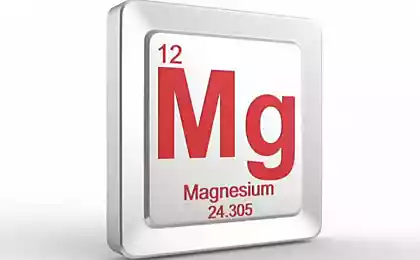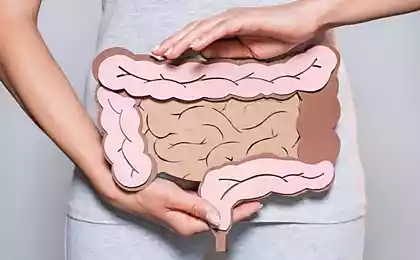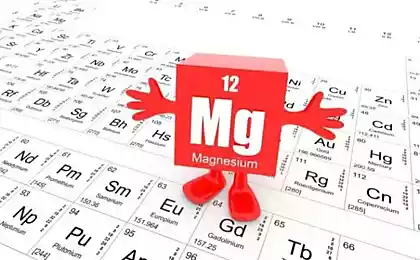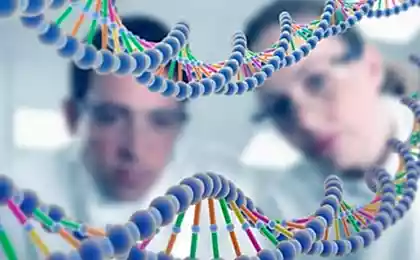686
Chronic pain: 6 triggers
6 common pain triggers that might surprise youChronic pain cure difficult, because, despite the fact that in some cases it is associated with injury or disease, in many other cases, the initial event that would have caused the pain(e.g., back injury, infection, arthritis or cancer), is missing.
In some cases, pain persists for weeks, months or years, and the reason was not revealed. It usually refers to lower back pain, headaches, or even neurogenic pain (also called neuropathic) – that is, pain that occurs in the peripheral or Central nervous system.
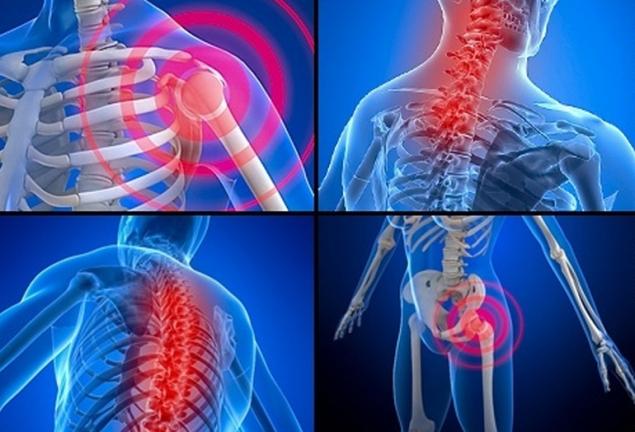
Chronic pain is a major cause of disabilityChronic pain (particularly back pain) is the leading cause of disability, which significantly affects the quality of life and productivity. Taking into account the medical expenses and economic costs (disability benefits and loss of income and loss of productivity), the cost of the U.S. health care system for the treatment of pain of up to 635 billion dollars per year.
This is a huge figure, how to assess the damage that occur in human life due to chronic pain?
So, according to a study conducted by the American Foundation for the fight against pain among people suffering from chronic pain:
Almost 20% of cases, because of the pain they are forced to take sick leave or change jobs. Another significant part of people (13 percent) are so debilitated by pain that they need help in everyday life.
We should not forget about the side effects of pain relievers, which many believe the only way to ease the pain. In testimony to Congress, data from the American physicians ' society for invasive treatment of pain, says that Americans consume 80 percent of the pain pills in the world, and once you start to take them, they trigger a cascade of reactions in the body, which are extremely difficult to stop.
Opioid painkillers, such as morphine, codeine, oxycodone, hydrocodone and fentanyl are medications that are most often misused. These drugs not only are addictive but also can lead to slow breathing and death if too much is taken, and if we add to this alcohol, the risks are compounded many times over.
Perhaps most frustrating is the fact that more than half of the American Foundation for the fight against pain said that can not or almost can not control the pain.Often this is because they don't even know what causes it, not to mention how it is effectively treated.
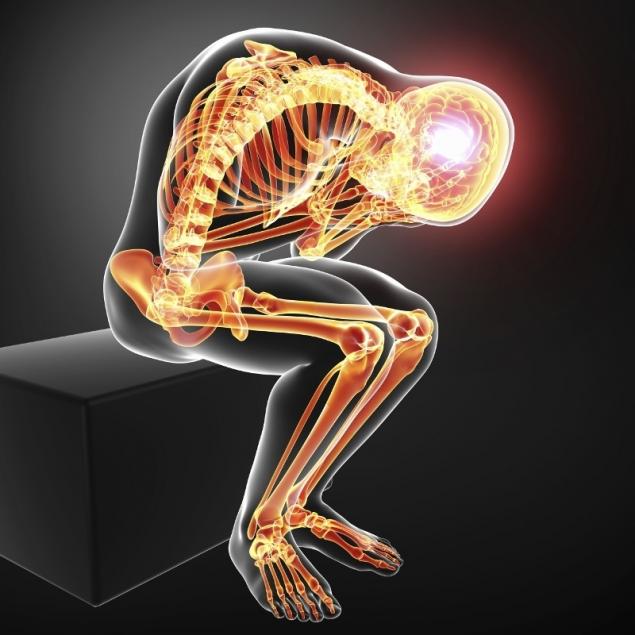
6 common pain triggers that might surprise youFirst of all, I firmly believe that you should be grateful for pain, because the organism gives to understand that your lifestyle can lead to disability. This, of course, does not apply to injuries, but they constitute a relatively small percentage of the causes of chronic pain.
Know how the disease robs the body's sensitivity to pain? Leprosy. People with leprosy usually die prematurely from serious infections which they catch when you don't feel feedback from exposure to the hot or sharp objects from the outside.
If you suffer from chronic pain that is not associated with any obvious reason, take a look at the list of triggers below.Often, physical pain can be the result of underlying disease, factor lifestyle or emotional trauma that you have not taken into account:
1.Emotional trauma
Very few people want to hear that their pain is psychological or emotional origin but there's quite a lot of evidence. One theory is that emotional trauma (along with physical injury and exposure to environmental toxins) may stimulate the Central nervous system molecules, called microglia.
Under stress, these molecules release inflammatory chemicals that causes chronic pain and psychological disorders such as anxiety and depression. Dr. John Sarno, for example, to treat patients with severe pain in lower back used psychosomatic techniques and wrote several books on the subject.
2.Painkillers
Oddly enough, but the drugs that most doctors prescribe for the treatment of pain, in the end, may exacerbate the pain in just a few months of their admission. Dr. Sanjay Gupta, Deputy chief neurosurgeon at the Grady memorial hospital and chief medical correspondent for CNN, reports:
"... After only a few months of taking the pills in the body begin to change. Decreases the effectiveness of drugs and patients usually report that, compared with the beginning of reception of tablets, now they reduce pain by only 30%. Of even greater concern is the fact that a subgroup of these patients develops a condition known as hyperalgesia, that is, increased sensitivity to pain.
As you might imagine, all of this creates a situation where a person begins to take more and more pills. And even if they don't work they continue to reduce the respiratory activity of the body."
3. A bad dream
Poor sleep affects virtually every aspect of health, and the reason for this is that the circadian rhythm (cycle of sleep and wakefulness), in fact, "sets the rhythm" biological activity at the cellular level. In addition, the body needs deep sleep, that tissue could grow and recover, and this is crucial for pain relief.
4. Increased gut permeability
Changing the diet is crucial to fight the pain, and that, in particular, is because of how it affects the health of the colon. Substances in cereals, for example, can increase gut permeability (i.e. "leaky gut syndrome"), resulting in undigested food particles, bacteria and other toxic substances "derived from" in the blood. An increased permeability of the gut can cause digestive symptoms such as bloating, flatulence and cramps, and also be the cause of many other symptoms, including inflammation and chronic pain, or contribute to their occurrence.
5. Magnesium deficiency
One of many functions of magnesium is by blocking brain receptors of glutamate — a neurotransmitter that can cause hypersensitivity of neurons to pain. This is especially important because, an estimated 80 percent of people suffer from magnesium deficiency. The two main factors of lifestyle which depletes magnesium in the body is stress, and certain prescription drugs, which patients with chronic pain are particularly at risk of deficiency of this trace element.

6. Lyme Disease
One of the first symptoms of Lyme disease include flu-like condition with fever, chills, headache, stiff neck, body aches and fatigue. However, it often takes a chronic course, some people – for decades, with the result that they suffer from pain in muscles and joints. Because Lyme disease and all its attendant infections cause so many constant symptoms, it easily masquerades as such disorders as multiple sclerosis, arthritis, Parkinson's disease, chronic fatigue syndrome, fibromyalgia and more.
If you suffer from chronic pain, and I don't know why, you should think about Lyme disease, even if you believe that you've never been bitten by a tick (it is the main vector). About the tick bite I remember less than half of patients with this disease. Many patients don't remember because the tick bite is painless – the skin is numbed. Some studies indicate that only 15 percent of patients notice the bite. So if you don't remember that you were bitten by a tick, it still does not exclude the possibility of Lyme disease.
Most doctors have no idea how to treat chronic painStudies show that seven out of 10 believe that the study and treatment of pain should be one of the main priorities of the medical community. But instead, these issues are barely mentioned. Research "APPEAL", dedicated to the study and raise awareness of pain in the course of which were interviewed senior students of medical schools of Europe, showed that even six-year curriculum included mandatory courses on pain relief, they have only 12 hours – or 0.2 percent. In addition, in most medical schools courses on pain are actually not among the compulsory for all students.
That means 12 hours of studying pain is the best option. And 82 percent of medical schools in which these courses are not compulsory, students may obtain even less... or not to learn pain. Although the study of the "APPEAL" was conducted in Europe, it displays a similar trend in the United States and Canada established a separate study published in the "journal of pain".
In most medical educational institutions pain studied within the framework of General education courses. Required course pain is read by less than four per cent of schools and in many schools the special courses do not offer. When doctors don't know how to effectively treat chronic pain, they resort to the only method known to them: a prescription drug does not work on the root cause of pain. Not to mention non-drug ways of pain treatment that can help you with appropriate strategies lifestyle. The non-drug treatment options include:

2.Reduce consumption of most processed foods as not only do they contain sugar and additives but also is overloaded with omega-6 fats that upset the delicate ratio of omega-3:6, contributing to inflammation – a key factor for most types of pain.
3.Avoid or radically reduce most grains and sugars (especially fructose) in your diet. Avoiding grains and sugars, you'll reduce the level of insulin and leptin. Elevated levels of insulin and leptin is one of the strongest stimulators of inflammatory prostaglandins. That is why the rejection of sugar and grains is so important to deal with the pain.
4.Optimization of the production of vitamin D by regular, appropriate sun exposure , using the various mechanisms it helps to reduce pain and to satisfy the appetite of the body to regular sunlight.
Try painkillers from mother nature:
Author: Dr. Joseph Mercola
P. S. And remember, just changing your mind — together we change the world! ©
Source: russian.mercola.com/sites/articles/archive/2016/12/15/6-%D1%82%D1%80%D0%B8%D0%B3%D0%B3%D0%B5%D1%80%D0%BE%D0%B2-%D1%85%D1%80%D0%BE%D0%BD%D0%B8%D1%87%D0%B5%D1%81%D0%BA%D0%BE%D0%B8-%D0%B1%D0%BE%D0%BB%D0%B8.aspx
In some cases, pain persists for weeks, months or years, and the reason was not revealed. It usually refers to lower back pain, headaches, or even neurogenic pain (also called neuropathic) – that is, pain that occurs in the peripheral or Central nervous system.

Chronic pain is a major cause of disabilityChronic pain (particularly back pain) is the leading cause of disability, which significantly affects the quality of life and productivity. Taking into account the medical expenses and economic costs (disability benefits and loss of income and loss of productivity), the cost of the U.S. health care system for the treatment of pain of up to 635 billion dollars per year.
This is a huge figure, how to assess the damage that occur in human life due to chronic pain?
So, according to a study conducted by the American Foundation for the fight against pain among people suffering from chronic pain:
- 59 per cent reported that pain affects their overall joy of life;
- 77 percent reported feeling depressed;
- 70% reported problems with concentration;
- 74 percent said COBOL affects their energy level;
- 86 percent reported the inability to sleep at night.
Almost 20% of cases, because of the pain they are forced to take sick leave or change jobs. Another significant part of people (13 percent) are so debilitated by pain that they need help in everyday life.
We should not forget about the side effects of pain relievers, which many believe the only way to ease the pain. In testimony to Congress, data from the American physicians ' society for invasive treatment of pain, says that Americans consume 80 percent of the pain pills in the world, and once you start to take them, they trigger a cascade of reactions in the body, which are extremely difficult to stop.
Opioid painkillers, such as morphine, codeine, oxycodone, hydrocodone and fentanyl are medications that are most often misused. These drugs not only are addictive but also can lead to slow breathing and death if too much is taken, and if we add to this alcohol, the risks are compounded many times over.
Perhaps most frustrating is the fact that more than half of the American Foundation for the fight against pain said that can not or almost can not control the pain.Often this is because they don't even know what causes it, not to mention how it is effectively treated.

6 common pain triggers that might surprise youFirst of all, I firmly believe that you should be grateful for pain, because the organism gives to understand that your lifestyle can lead to disability. This, of course, does not apply to injuries, but they constitute a relatively small percentage of the causes of chronic pain.
Know how the disease robs the body's sensitivity to pain? Leprosy. People with leprosy usually die prematurely from serious infections which they catch when you don't feel feedback from exposure to the hot or sharp objects from the outside.
If you suffer from chronic pain that is not associated with any obvious reason, take a look at the list of triggers below.Often, physical pain can be the result of underlying disease, factor lifestyle or emotional trauma that you have not taken into account:
1.Emotional trauma
Very few people want to hear that their pain is psychological or emotional origin but there's quite a lot of evidence. One theory is that emotional trauma (along with physical injury and exposure to environmental toxins) may stimulate the Central nervous system molecules, called microglia.
Under stress, these molecules release inflammatory chemicals that causes chronic pain and psychological disorders such as anxiety and depression. Dr. John Sarno, for example, to treat patients with severe pain in lower back used psychosomatic techniques and wrote several books on the subject.
2.Painkillers
Oddly enough, but the drugs that most doctors prescribe for the treatment of pain, in the end, may exacerbate the pain in just a few months of their admission. Dr. Sanjay Gupta, Deputy chief neurosurgeon at the Grady memorial hospital and chief medical correspondent for CNN, reports:
"... After only a few months of taking the pills in the body begin to change. Decreases the effectiveness of drugs and patients usually report that, compared with the beginning of reception of tablets, now they reduce pain by only 30%. Of even greater concern is the fact that a subgroup of these patients develops a condition known as hyperalgesia, that is, increased sensitivity to pain.
As you might imagine, all of this creates a situation where a person begins to take more and more pills. And even if they don't work they continue to reduce the respiratory activity of the body."
3. A bad dream
Poor sleep affects virtually every aspect of health, and the reason for this is that the circadian rhythm (cycle of sleep and wakefulness), in fact, "sets the rhythm" biological activity at the cellular level. In addition, the body needs deep sleep, that tissue could grow and recover, and this is crucial for pain relief.
4. Increased gut permeability
Changing the diet is crucial to fight the pain, and that, in particular, is because of how it affects the health of the colon. Substances in cereals, for example, can increase gut permeability (i.e. "leaky gut syndrome"), resulting in undigested food particles, bacteria and other toxic substances "derived from" in the blood. An increased permeability of the gut can cause digestive symptoms such as bloating, flatulence and cramps, and also be the cause of many other symptoms, including inflammation and chronic pain, or contribute to their occurrence.
5. Magnesium deficiency
One of many functions of magnesium is by blocking brain receptors of glutamate — a neurotransmitter that can cause hypersensitivity of neurons to pain. This is especially important because, an estimated 80 percent of people suffer from magnesium deficiency. The two main factors of lifestyle which depletes magnesium in the body is stress, and certain prescription drugs, which patients with chronic pain are particularly at risk of deficiency of this trace element.

6. Lyme Disease
One of the first symptoms of Lyme disease include flu-like condition with fever, chills, headache, stiff neck, body aches and fatigue. However, it often takes a chronic course, some people – for decades, with the result that they suffer from pain in muscles and joints. Because Lyme disease and all its attendant infections cause so many constant symptoms, it easily masquerades as such disorders as multiple sclerosis, arthritis, Parkinson's disease, chronic fatigue syndrome, fibromyalgia and more.
If you suffer from chronic pain, and I don't know why, you should think about Lyme disease, even if you believe that you've never been bitten by a tick (it is the main vector). About the tick bite I remember less than half of patients with this disease. Many patients don't remember because the tick bite is painless – the skin is numbed. Some studies indicate that only 15 percent of patients notice the bite. So if you don't remember that you were bitten by a tick, it still does not exclude the possibility of Lyme disease.
Most doctors have no idea how to treat chronic painStudies show that seven out of 10 believe that the study and treatment of pain should be one of the main priorities of the medical community. But instead, these issues are barely mentioned. Research "APPEAL", dedicated to the study and raise awareness of pain in the course of which were interviewed senior students of medical schools of Europe, showed that even six-year curriculum included mandatory courses on pain relief, they have only 12 hours – or 0.2 percent. In addition, in most medical schools courses on pain are actually not among the compulsory for all students.
That means 12 hours of studying pain is the best option. And 82 percent of medical schools in which these courses are not compulsory, students may obtain even less... or not to learn pain. Although the study of the "APPEAL" was conducted in Europe, it displays a similar trend in the United States and Canada established a separate study published in the "journal of pain".
In most medical educational institutions pain studied within the framework of General education courses. Required course pain is read by less than four per cent of schools and in many schools the special courses do not offer. When doctors don't know how to effectively treat chronic pain, they resort to the only method known to them: a prescription drug does not work on the root cause of pain. Not to mention non-drug ways of pain treatment that can help you with appropriate strategies lifestyle. The non-drug treatment options include:
- Chiropractic or osteopathic correction: according to a study published in the "Annals of internal medicine", funded by the National Institute of health, 12 weeks treatment patients with pain in the neck who were treated with manual therapy and/or exercise, are twice as likely to have pain than patients who received medical therapy.
- Massage: massage releases endorphins, which induce relaxation, relieve pain and reduce levels of stress hormones such as cortisol and noradrenaline reversing the ravages of stress by slowing heart rate, respiration and metabolism, and reduces high blood pressure.
- Acupuncture: researchers concluded that acupuncture specific manner will lessen chronic pain, such as back pain and headaches, more so than standard pain treatment.

- Physiotherapy. Can be a very effective tool for rehabilitation pain.
- Re-learn the correct posture: method Gochal eliminates the root cause of physical pain, often caused by incorrect posture. This method will teach you how to restore the original position is designed to ensure that your body could stand, sit and move. You can also try a fundamental training method developed by Dr. Eric Goodman to treat his own chronic back pain.The objective of the exercise is to help to strengthen the body and learn to move as nature intended.
2.Reduce consumption of most processed foods as not only do they contain sugar and additives but also is overloaded with omega-6 fats that upset the delicate ratio of omega-3:6, contributing to inflammation – a key factor for most types of pain.
3.Avoid or radically reduce most grains and sugars (especially fructose) in your diet. Avoiding grains and sugars, you'll reduce the level of insulin and leptin. Elevated levels of insulin and leptin is one of the strongest stimulators of inflammatory prostaglandins. That is why the rejection of sugar and grains is so important to deal with the pain.
4.Optimization of the production of vitamin D by regular, appropriate sun exposure , using the various mechanisms it helps to reduce pain and to satisfy the appetite of the body to regular sunlight.
Try painkillers from mother nature:
- Ginger: this herb has anti-inflammatory, analgesic and soothing stomach properties. Fresh ginger works well if you make it in boiling water and drink as tea or add grated into vegetable juice.
- Curcumin: curcumin is the primary therapeutic compound found in the spice turmeric. In a study of patients with osteoarthritis, those who added only 200 mg of curcumin a day to their treatment plan had reduced pain and improved mobility. More than 50 clinical trials have proven that curcumin has strong anti-inflammatory effect, and four studies demonstrated that it reduces unwanted side effects "Tylenol".
- Boswellia: also known under the names "boswellin" or "Indian frankincense". Thousands of years this herb is valued for its powerful anti-inflammatory properties. This is one of my favorite tools, because I saw how well she helps many patients revmatoidnom arthritis.
- Bromelain: this enzyme in the digestion of protein, found in pineapples, is a natural anti-inflammatory agent. It can be taken in Supplement form, but you can just eat fresh pineapple. Keep in mind that most of bromelain is in the core, so try to leave a little soft core intact when you eat this fruit.
- Cetyl myristoleate (CMO): this oil, which is contained in fish oil and butter acts as a lubricant for joints and anti-inflammatory. I've applied it topically to ease the tendon ganglion and a few annoying tunnel syndrome of the brush, which makes itself felt whenever I spent too much time typing on non-ergonomic keyboard.
- Evening primrose oil, black currant and borage: they contain fatty gamma-linolenic acid (GLA), useful for treating joint pain.
- Ointment with Cayenne pepper or capsaicina ointment. This spice obtained from dried hot peppers. It eases the pain, depleting the body's substance P – a chemical component of nerve cells that transmit pain signals to the brain.published
Author: Dr. Joseph Mercola
P. S. And remember, just changing your mind — together we change the world! ©
Source: russian.mercola.com/sites/articles/archive/2016/12/15/6-%D1%82%D1%80%D0%B8%D0%B3%D0%B3%D0%B5%D1%80%D0%BE%D0%B2-%D1%85%D1%80%D0%BE%D0%BD%D0%B8%D1%87%D0%B5%D1%81%D0%BA%D0%BE%D0%B8-%D0%B1%D0%BE%D0%BB%D0%B8.aspx








